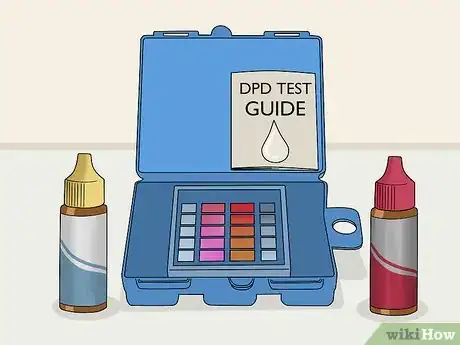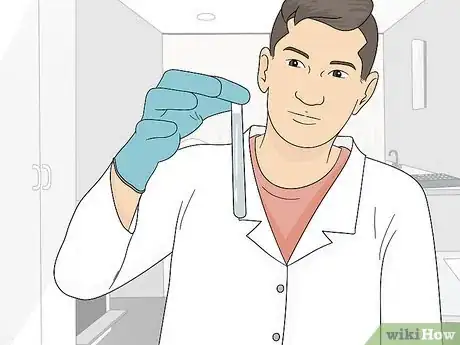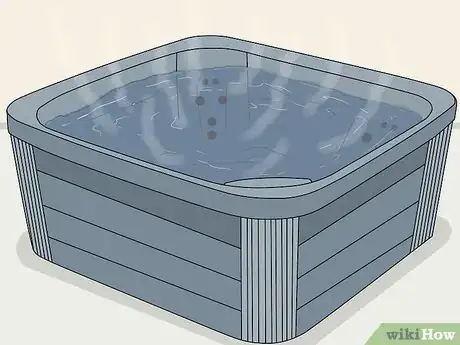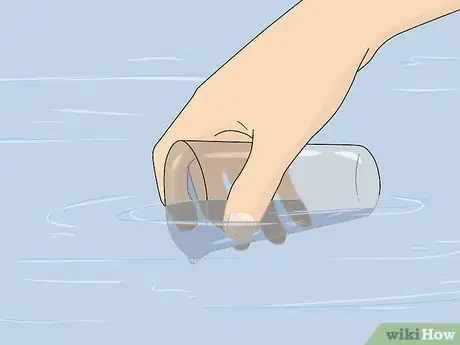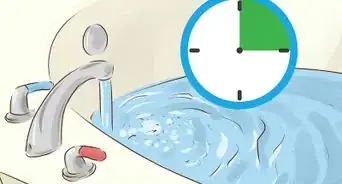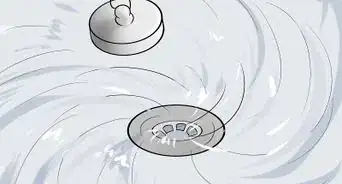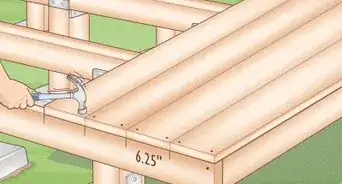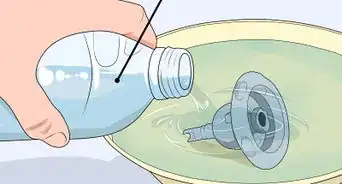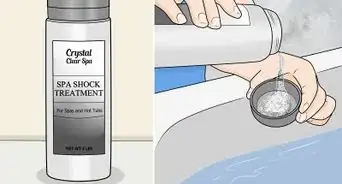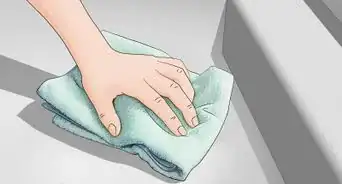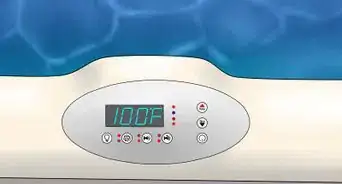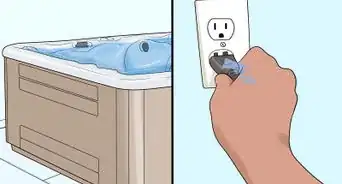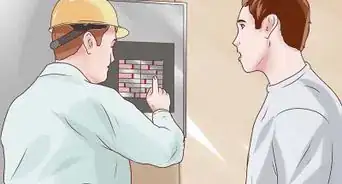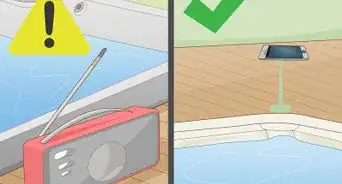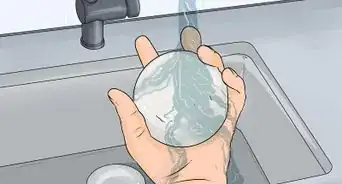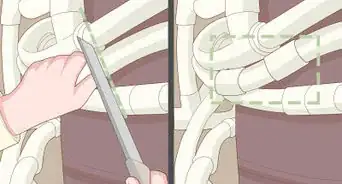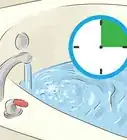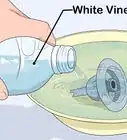This article was co-authored by wikiHow staff writer, Kyle Hall. Kyle Hall works on the content team at wikiHow. He helps manage our team of editors and creates content for a variety of wikiHow projects. Kyle continually looks for new ways to improve the content at wikiHow and make it more helpful and enjoyable for readers. He graduated from Eckerd College in 2015, where he majored in Political Science.
There are 10 references cited in this article, which can be found at the bottom of the page.
wikiHow marks an article as reader-approved once it receives enough positive feedback. In this case, 96% of readers who voted found the article helpful, earning it our reader-approved status.
This article has been viewed 61,144 times.
Learn more...
Chlorine is a popular sanitizer used in pools and hot tubs to kill germs. Having high enough chlorine levels is important since it protects you and other bathers from dangerous germs that thrive in hot water. However, chlorine levels that are too high can irritate your skin, eyes, and lungs, so you don’t want to go overboard.[1] If you think your hot tub has too much chlorine in it, the first thing you should do is test it to make sure. If the chlorine levels are too high, you can either wait it out and let the chlorine break down naturally or replace some of the water in your hot tub with fresh water. You can also use a chlorine neutralizer to quickly eliminate excess chlorine.
Steps
Testing Chlorine Levels
-
1Use chlorine test strips for an easy at-home option. With test strips, you just swirl one of the strips around in your hot tub for a few seconds, then compare the color that appears on the test strip to the chart provided with the product. The chart will tell you how much free chlorine is in the water. Some test strips will also test the pH and alkalinity of your hot tub.[2]
- You can find chlorine test strips at hardware stores, pool supply stores, and online.[3]
- Always use test strips that can differentiate between free chlorine and combined chlorine. Free chlorine is the level of active chlorine that’s sanitizing your hot tub, while combined chlorine is all of the chlorine that’s been used up. You need to be able to test free chlorine separately (not just total chlorine) so you know your hot tub has a safe level of active sanitizer in it.[4]
-
2Test for chlorine using a DPD test kit for the most accurate results. A DPD test kit comes with different reagents that you mix with your hot tub water to test things like chlorine and pH. They’re generally more accurate than test strips. To use a DPD kit to test free chlorine, just fill the provided vial with water from your hot tub, and add the chlorine reagent according to the instructions. Cap the vial, shake it, and compare the color of the water to the provided chart to see what the chlorine levels are.[5]
- DPD stands for N,N Diethyl-1,4 Phenylenediamine Sulfate, which is the reagent used in the test kit.
- You can purchase DPD test kits in pool supply stores and online.
- Remember to measure for free chlorine with your test kit, not just total chlorine.
Advertisement -
3Have the chlorine tested by professionals if you want an expert opinion. Many hot tub dealers offer in-store testing for hot tub water. Just collect a sample of your hot tub water in a plastic bottle, bring it to your local dealer, and pay to have the free chlorine levels tested.[6]
- Having a professional hot tub technician test your chlorine levels ensures that you’ll get an accurate reading. They’ll also be able to offer advice if your chlorine levels are too high or low.
-
4Lower your hot tub’s free chlorine level if it’s over 3 ppm. Three ppm is the recommended free chlorine level for preventing disease-causing germs in a hot tub. A free chlorine level that’s higher than that could possibly irritate your skin, eyes, and lungs when you use your hot tub.[7]
- If your hot tub’s free chlorine level is under 3 ppm, add more chlorine instead.
Lowering High Chlorine Levels
-
1Wait for the chlorine levels to lower on their own if you’re not in a rush. Chlorine levels naturally break down over time. Try waiting 24-48 hours, and then test your hot tub water again. The chlorine levels might not be too high anymore.[8]
Tip: Leave your hot tub cover off while you wait. Ultraviolet rays from the sun break down chlorine faster.[9]
-
2Replace some of the hot tub water to dilute the chlorine for a faster option. Scoop out a bucketful of water from your hot tub, then add a bucketful of fresh water. This will lower the overall concentration of chlorine. After you add the fresh water, turn on the jets and let it circulate for 20 minutes. Then, test the water again to see if the chlorine is at a safe level.[10]
- If the chlorine levels are still too high, try replacing one bucketful of water at a time, testing your hot tub water after each one. For particularly high levels, you may need to drain your hot tub completely and refill it with fresh water. If you do refill it, make sure you sanitize it with the right amount of chlorine.
-
3Use a chlorine neutralizer to lower chlorine levels without replacing any water. Chlorine neutralizer, also called sodium thiosulfate, is a compound that lowers chlorine levels when it’s added to pool and hot tub water. Just add the crystals to your hot tub water according to the manufacturer’s instructions. Then, run the jets for a few minutes to circulate the neutralizer, and retest the water to see if the chlorine levels are still too high.[11]
- You can find chlorine neutralizer at pool supply stores and online.
-
4Test the water again before using your hot tub. Whenever you attempt to lower the chlorine levels in your hot tub, it’s important that you test the water again before you get in it. If you accidentally removed too much chlorine and the levels are low now, it puts you and other bathers at risk of contracting diseases from germs in the water. If the levels are too low, you’ll just need to add some more chlorine back into your hot tub water and retest it to see if it’s at a safe level.
Warnings
- Avoid lowering your free chlorine levels below 3 ppm or the chlorine may not be strong enough to kill all of the germs in your hot tub.[12]⧼thumbs_response⧽
References
- ↑ https://www.cdc.gov/healthywater/swimming/aquatics-professionals/chloramines.html
- ↑ https://www.youtube.com/watch?v=RwbXM8By4pw&feature=youtu.be&t=8
- ↑ https://www.cdc.gov/healthywater/swimming/swimmers/pool-spa-test-strips.html
- ↑ https://www.watertechonline.com/wastewater/article/15529492/maintaining-spa-water-quality-is-easier-than-you-think
- ↑ https://www.youtube.com/watch?v=adIbRmgYehg&feature=youtu.be&t=5
- ↑ https://www.youtube.com/watch?v=6Ch0JirOZIM&feature=youtu.be&t=14
- ↑ https://www.cdc.gov/healthywater/swimming/residential/disinfection-testing.html
- ↑ https://poolcareguy.com/hot-tub-chemistry/
- ↑ https://sciencing.com/heat-sun-affect-pool-chlorine-21723.html

